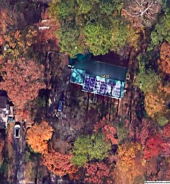I have the same problem with shading and did extensive research and like everybody says, the best approach is the chainsaw approach. But besides that, some other tips:
- you want the half cut modules, so you reduce the impact of shade on the panel. A normal 60/72 cell panel is divided in three sections so shade in any of the 3 sections reduces power by 1/3. Half cut modules are divided into 6 strings, so you have more granularity on the shading loss (1/6 of the power). If there there is just a little shade, it will lose less power.
- consider HIT/ multijunction panels. They have a better response to the light spectrum, specially indirect light, so that gives you an extra juice. However they are expensive, so it depends if you can find them used. There are several brands that produces it, but they are hard to find.
- instead of string inverters, you definitely should go the micro inverter direction. On micro inverters, each panel is independent, so shade on one panel doesn't impact the others.
One last thing to consider are thin film panels. The layout of the panel is different with the cell being a string that covers the panel from end to end, so they are more tolerant to shading. Here is an video of it:
The manufacture of the panel is out of business, but it happens that a solar farm close to you is selling all their thin film panels:

www.facebook.com
The problem with these is that they are very high voltage ( ~80volts) and I couldn't find a microinverter that will work with them, other than the Enphase IQ7XS that is a custom made version for Sunpower
https://www.facebook.com/marketplace/105527782815125. The max voltage is very close if not over the limit, but the panels are already 6 to 8 years old, so it may work.
Anyway, like I said I have lots of ideas about your situation. I also have some other leads of very cheap materials if you want to play with solar.
Attached is my house. The green trees are pines that I already took down, including some other trees. The shade still impacts my production early and late in the afternoon and on the fall months when the sun is down.
View attachment 172758






